This is a guest blog post, written by our colleagues at RBG Kew.
European ash trees are under great threat from the ash dieback disease. As a source of life for several species of plant and animal, their survival is extremely important for the health of our ecosystem. The solution lies in identifying and studying ash trees that appear not to be affected by the disease.
Here at Kew, we are involved in some brilliant projects that are doing just this, and you can help us. Our blog post all about telling a healthy ash tree from a diseased one will give you the knowledge you need to get started. Read on to learn about the challenges and progress we are making with our projects.
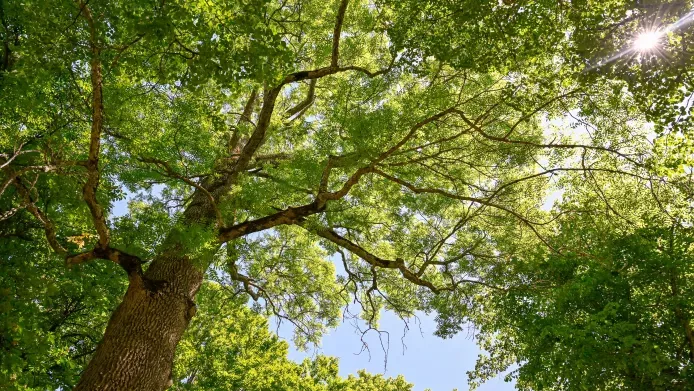
Jonas Rönnbro/ iStock
The UK Ash Collecting Project
The UK Ash Collecting Project was launched at the Millennium Seed Bank last summer with two key aims:
-
To find new ash trees for seed collection that were showing promising signs of tolerating the seemingly ever-present ash dieback disease
-
To revisit and assess some of the ash trees that gave seeds to the MSB as part of the UK National Tree Seed Project, back in 2013-16
After completing our final fieldwork visit, the prognosis did not look good. Only 3 of the 184 trees we revisited and surveyed were found to display the healthy crown that indicates potential tolerance to ash dieback.
But all was not lost (although after a day at some field sites, it did feel that way). After surveying an area of roughly 476 hectares (the equivalent of roughly 650 football pitches) across 27 sites we were able to find 29 new ash trees that could tentatively be called tolerant, Huzzah!

Vicky Philpott/ RBG Kew
Whilst our original plan had been to make seed collections from all female trees, nature and Coronavirus had other plans. Although 2020 was a mast year (where trees spend their saved-up resources producing a massive number of seeds) field work was impossible due to lockdown. What’s more, the late frosts of spring 2021, meant that very few ash trees were seeding at all. This was a great shame to say the least.
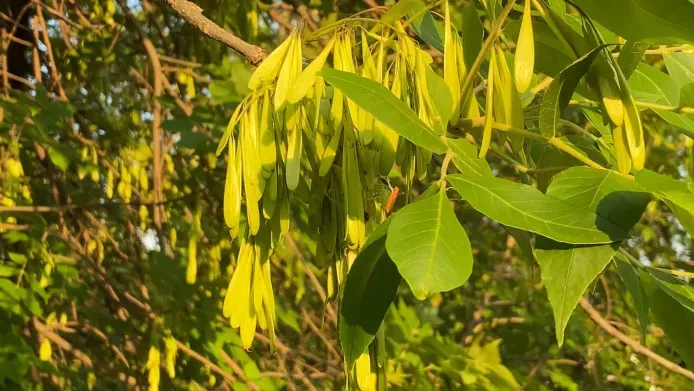
Marina Troynich/ iStock
Our hope is that we will be able to return to the 29 new trees as part of a new project, sometime in the next 3 years. We aim to collect seeds from them and continue surveying across the UK, in search of more ash trees displaying signs of tolerance.
Growing roots: the Living Ash Project
The Living Ash Project (LAP) aims to identify and ‘propagate’ ash dieback-tolerant trees. Propagation is the process of breeding new plants, from a parent plant. Funded by Defra, this project is a collaboration between the Future Trees Trust, Fera, Forest Research and Kew.
Kew’s contribution to the LAP consists of a series of trials to improve ash propagation techniques using cuttings. A cutting is made by taking a section of a plant (in this case a portion of a branch) and encouraging it to form new roots in soil. This generates a genetically identical clone of the mother plant. If successful, the best methods found in our trials may be used to propagate tolerant trees for seed orchards or woodlands where ash has been lost.
Kew’s ash propagation trials
We have set up two trials in the Wakehurst nursery so far: one involved semi-ripe cuttings taken last July, the other focussed on hardwood cuttings taken in mid-February. For each trial, the arboriculture team (who are responsible for the cultivation and care of trees) helped us cut down some branches for cuttings from local trees. We also collected cuttings from trees growing in the nearby National Trust estate at Nymans and from seedlings found around Wakehurst, since younger cuttings are expected to root more easily. The horticulture team (that takes care of the Wakehurst nursery and gardens) came together to help with preparing and setting up the cuttings in trays in the nursery: a great example of how science is all about collaboration between people at Kew and beyond.
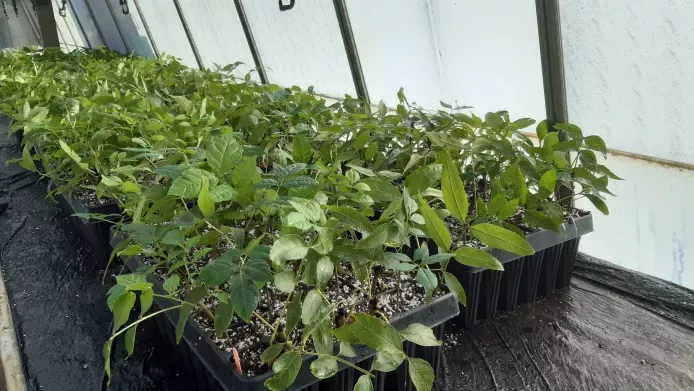
LAP trial of semi-ripe cuttings (July 2021): Isabel Negri/ RBG Kew
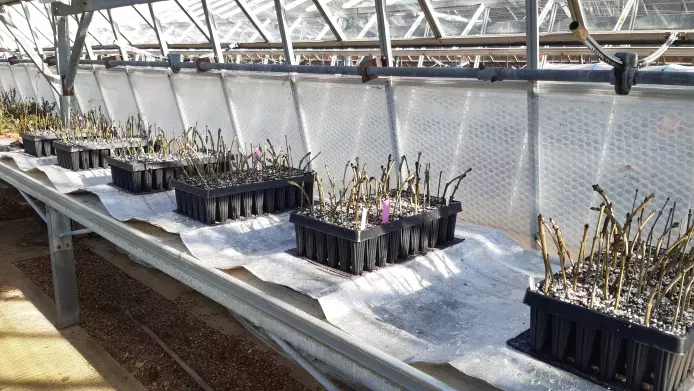
LAP trial of hardwood cuttings (February 2022): Isabel Negri/ RBG Kew
When preparing for the LAP trials, it became obvious that a huge number of factors can influence the rooting of cuttings. We decided to test the effects of different soil types, specifically peat-based versus more sustainable peat-alternative compost. We are currently experimenting with different concentrations of rooting hormones too, as well as the use of mycorrhizal fungi (fungi that grows and lives symbiotically with plant roots). Soil inoculated with such fungi has already been found to enhance the rooting of cuttings in several other tree species.
Some roots are already visible, peeking out from the bottom of the trays of our first trial. Let’s hope to see lots more when we begin to collect results.
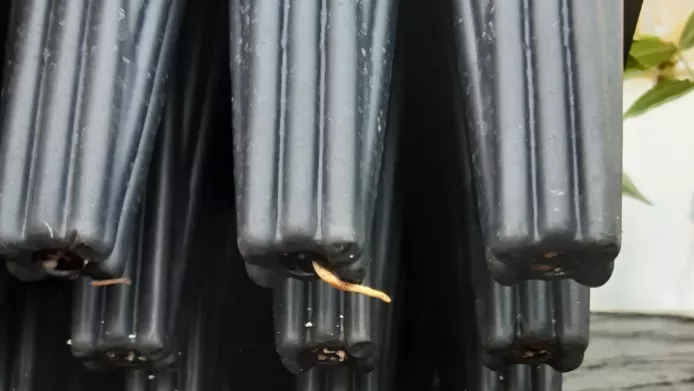
Ash roots, LAP trial (summer 2021): Isabel Negri/RBG Kew
How can you help?
-
Learn more about the importance of ash trees to our woodlands and spread awareness.
-
Look out for ash dieback-tolerant ash trees in woodland settings and report them to the Living Ash Project.
To learn how to do this, take a look at our other blog post about identifying ash trees and assessing their health. Or, watch the informative video below.
Trees in gardens and in areas protected from the wind may not have been exposed to the fungus enough, and therefore may not be tolerant. -
Remember that ash trees shouldn’t be removed unless it is for safety reasons, because they may be tolerant.
-
Try to clean off muddy boots or bike tyres after a walk or cycle, to reduce the risk of transferring plant diseases between areas.
Learn to identify ash dieback-tolerant ash trees
Watch this informative video presented by Future Trees Trust and DEFRA to learn how to identify ash trees with good tolerance to ash dieback.
Acknowledgements
With thanks to Vicky Philpott, Ash Collecting Project Field Officer, and Russell Croft and James Pumfrey, Wakehurst Arboretum Manager and Lead for throwline training.
Many thanks to everyone from the arboriculture and horticulture teams who helped out with the Living Ash Project, and to Chloe Bradbrooke and the National Trust team at Nymans.
